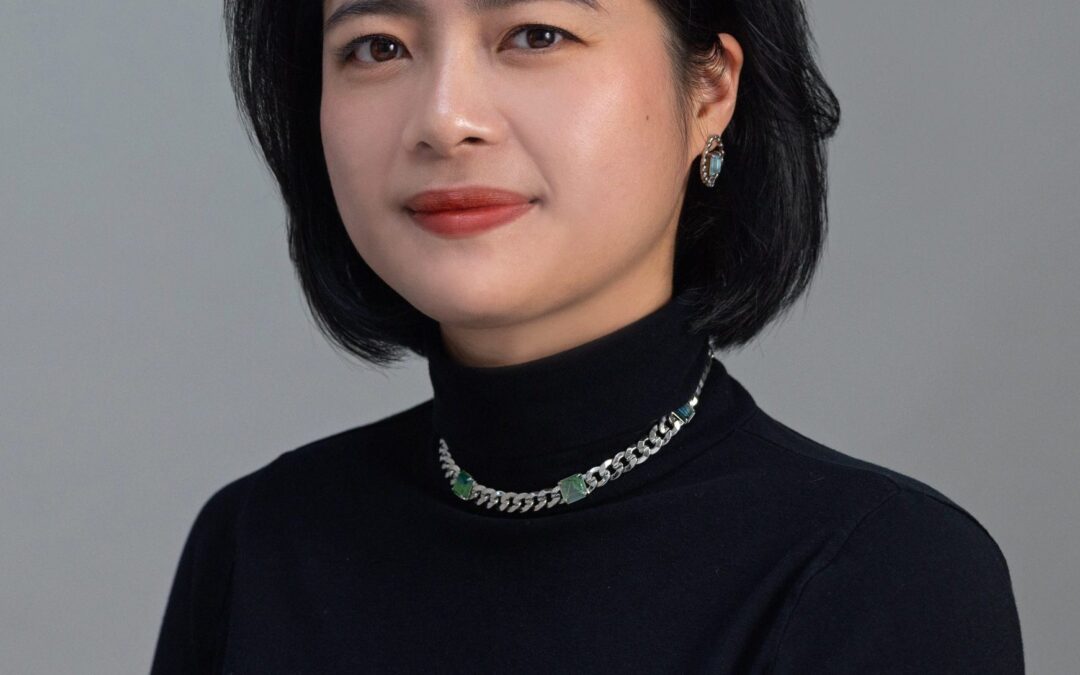By Montague Gammon III
Authenticity is a hallmark of Virginia Opera’s early March, Season 49 closing production of Madama Butterfly, Giacomo Puccini’s tragedy of Japanese-American romance.
From the Asian-born director’s fundamental ideas about staging it, to the casting of Asian descent performers, on down to carefully coached details of Japanese mannerisms and even to the way the chorus moves and sits when wearing kimonos, this Butterfly takes wing in an “on location” researched staging by Chinese born, American-educated director Mo Zhou (pictured above).
“She comes highly recommended from many sources,” VO Artistic Director and Butterfly conductor Adam Turner said about Zhou in a phone chat, adding “I’m excited to work with her.”
The story of Japanese teenager Cio-Cio San, contracted to an American sailor for what he considers to be a temporary marriage of convenient physicality and she lives out as a match of true love, plays out at the Harrison Opera House under the artistic control of a all Asian, all female directorial and design team. Zhou has even brought on board a culture and movement consultant, prominent Japanese stage and TV actor Asuka Morinaga, herself Hiroshima born and now a resident of of New York.
Madama Butterfly is consistently one of the most produced, most popular, and often termed “most beloved,” operas in what is called “the standard repertory” of the art form. It’s also one of very few genuinely great works of art that justifiably can be called an unapologetic tear jerker. In the operatic canon, it’s in the nearly incomparable handkerchief pulling company of that even more popular Puccini masterpiece La Boheme, and probably of Verdi’s Othello.
The story of Butterfly is based on a verifiable, accessibly documented story from 1873 Nagasaki. The sad tale of Cio-Cio San and her too casual lover/husband, Lt. Benjamin Franklin Pinkerton, USN, is rooted in notes recording an oral history recounted by Christian missionaries in Japan. It became an 1887 short story by John Long, in 1900 was reworked into an American play by David Belasco, and eventually matured as this 1904 Italian opera, gaining more intense elements of physical tragedy along the way, but remaining in Nagasaki all along.
Nagasaki. Where America dropped the only plutonium fueled atom bomb ever used as a weapon.
Therein lies the heart of Zhou’s approach to Madama Butterfly, coupled with her undergraduate studies in America as a political science major, as she related in a telephone conversation.
After World War II, when the American military occupied Japan, she explained, “There’s a very specific phenomenon called ‘the war brides,’ meaning young Japanese women were so traumatized by the atomic bomb that they would literally grab any American soldier and beg them to marry them and take them out of Japan. Between 1946 and 1952 [when the American occupation of Japan ended] about 48,000 documented Japanese women had married into America…Can you imagine how many Japanese women were left behind just like Cio-Cio San? And how many biracial kids were left alone in Japan?…Nobody in Japan talks about this part of history.”
Zhou’s research took her and a former student, Sachie Ueshima, who will sing the role of Cio-Cio San in the Saturday evening Butterfly performance, on a trip to Nagasaki. There they examined the “very detailed documentation” of the original events, visited “the American missionary house where [the real couple] met,” and even stood in the home which that couple shared.
“That’s what I love about these visiting directors,” Turner remarked, “They uncover these historical perspectives. It’s so important to bring these to our audiences.”
(Small world sidelight Number 1: Sachie Ueshima’s voice teacher is Diana Soviero, Zhou revealed. Soviero spectacularly starred as Violetta Valery in La Traviata, Virginia Opera’s first nationally noted, and New Yorker magazine favorably reviewed, production in 1975.)
(Small world sidelight Number 2: This Madama Butterfly is coincidentally a co-production of Florentine Opera in Wisconsin and the Kentucky Opera. Wisconsin and Kentucky were the two “major places” where Japanese war brides settled in the US, according to Zhou.)
Transferring the setting of Butterfly from 1904 Nagasaki to the same, but post A-Bomb, city in 1946 not only makes it more approachable, and more relevant without being superficially so, but enhances its historical links.
Zhou: “It’s no longer a young Asian woman’s desperate love for a white man. It has a social background to back it up.”
Purists take heart. All the Puccini is still there.
Turner comments, “The conflicts of an arranged marriage, wanting to find freedom in a new world, dashed hopes, I think we all can relate in some way. And [as in opera generally] we can all find connections to the emotions that those characters are feeling…In opera the emotions are dialed to eleven, and when people emit this glorious singing [that] is almost primal… that’s just overwhelming.”
“I really appreciate Virginia Opera,” Zhou made a point of saying. “They made very clear that they want [Asian descent performers in all Asian roles]. I’ve been saying this concept aloud for over 10 years … Virginia [Opera] is giving everything they can to make it happen; it is very special for me and the Asian artists to have a company that is so supportive of artists’ visions.”
“I’m really excited about this Butterfly.”
WANT TO GO?
Madama Butterfly
Giacomo Puccini, libretto by Luigi Illica and Giuseppe Giacosa
Virginia Opera
7:30 p.m., Fri., March 8
7:30 p.m., Sat. March 9 (Alternate cast)
2:30 p.m., Sun. March 10
Harrison Opera House, Norfolk
www.vaopera.org
1-866-673-7282
(Additional performances in Richmond and Fairfax)




